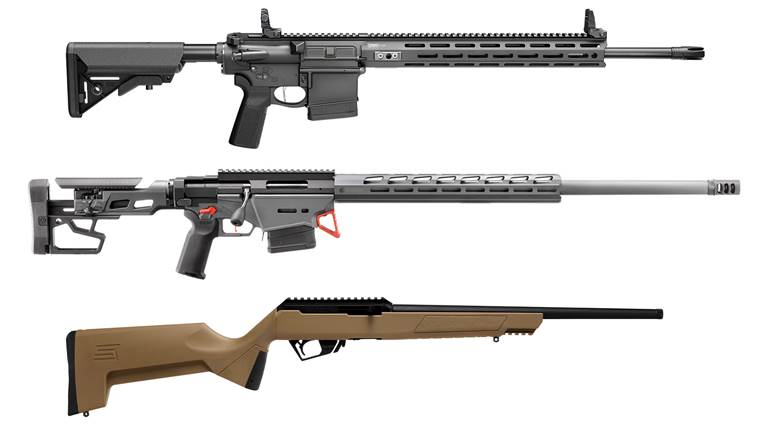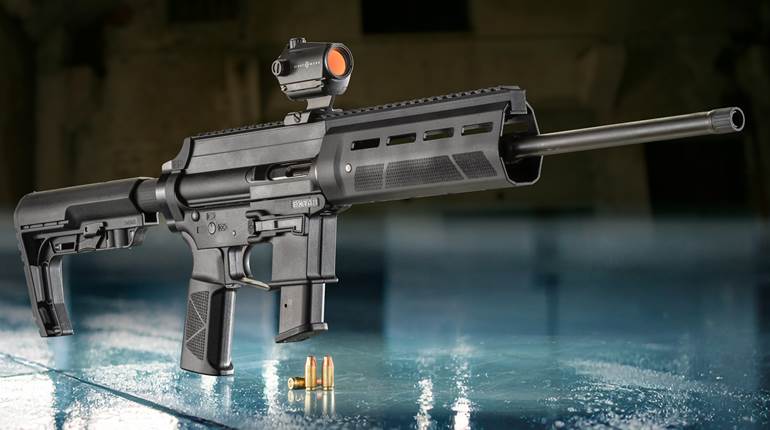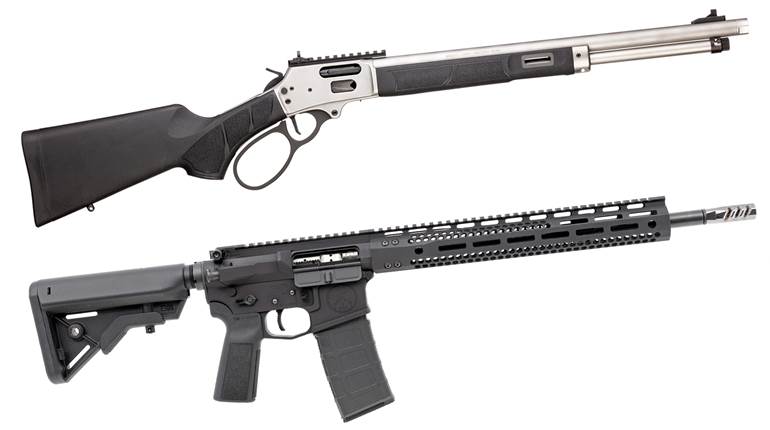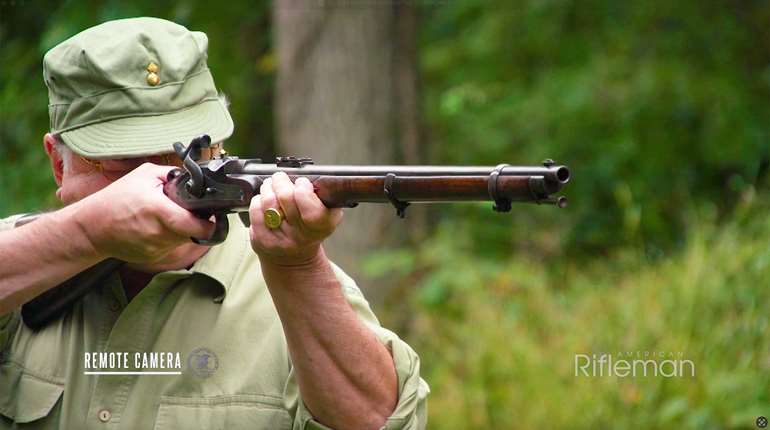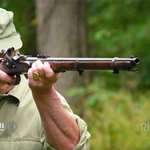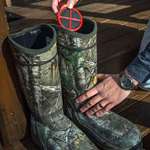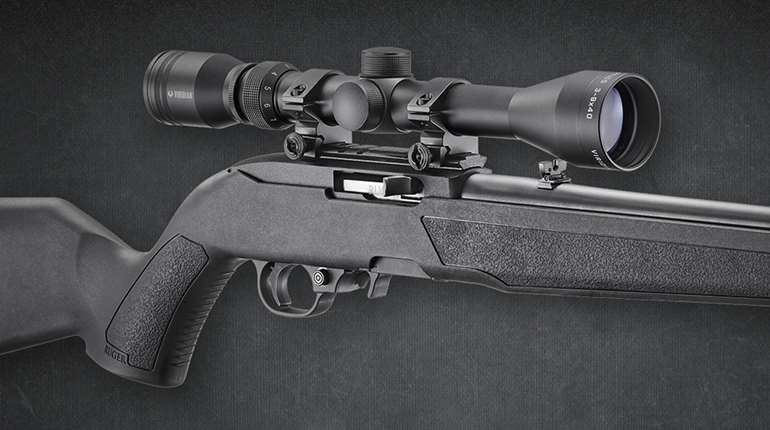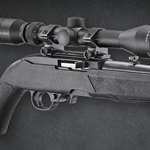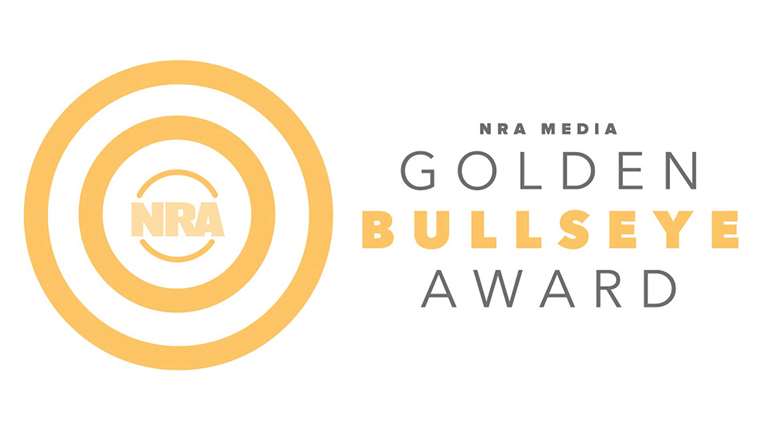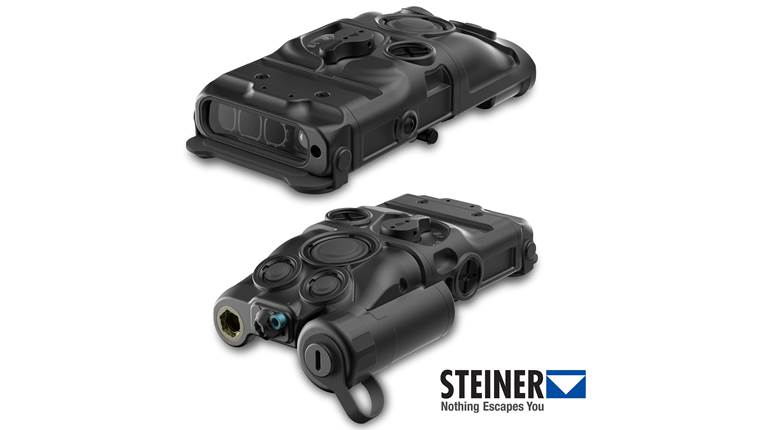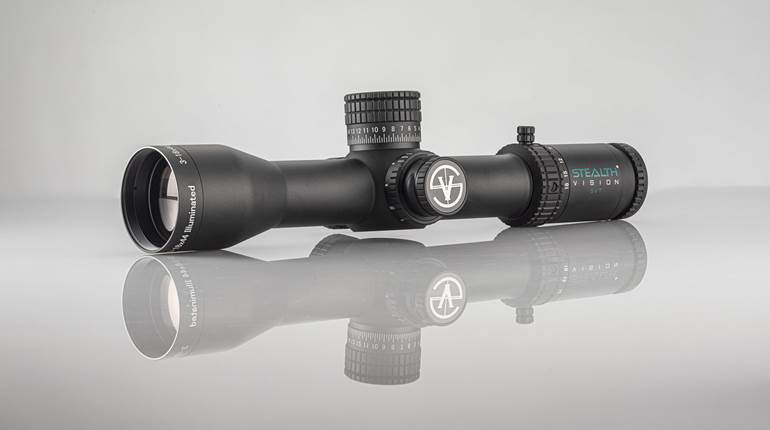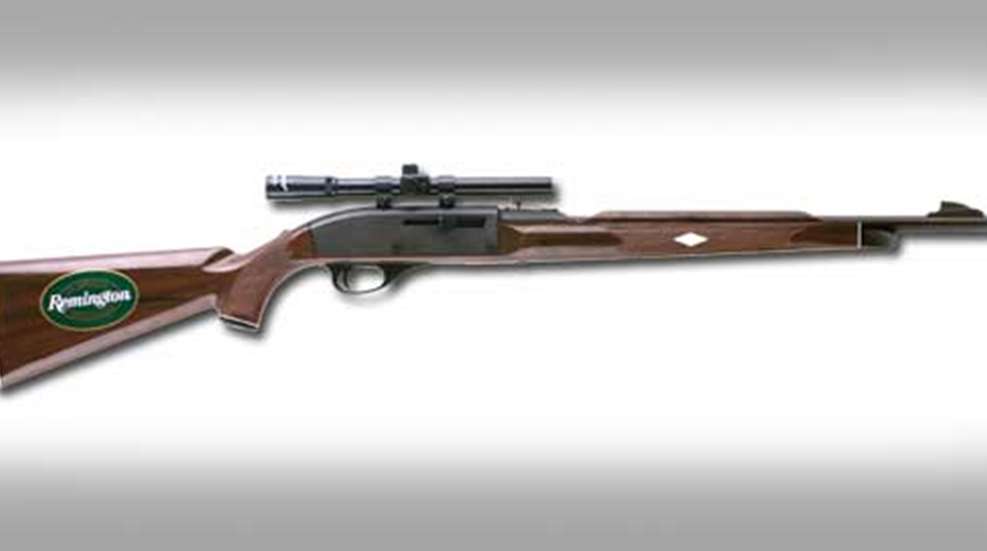
In the early 1950s, Remington Arms Co. did not have a mid-priced .22-cal. semi-automatic rifle. Management knew that there were three high-cost components of any sporting arm– the barrel, receiver and stock. Engineers analyzed each to see if any significant cost savings could be obtained. They soon concluded that barrels did not offer much opportunity for savings, so they focused on the receivers and stocks.
Remington asked the chemical engineers at DuPont to come up with a plastic that could replace both the wooden stock and the receiver. The specs given to the DuPont chemical development department in the early 1950s were: The material must be capable of forming any shape desired; it must have a high tensile-impact and flexural strength; it must have high abrasion resistance; it must have high resistance to heat distortion; it must be resistant to cold temperatures, it must, if exposed to a flame, not continue to burn when that flame is removed; it must be impervious to solvents, oils, mild acids, alkalis, fungus, rodents and insects; it must have a finish that is easy to repair; it must be light in weight; it must hold permanent colors; it must have no corrosive effect on other parts; and it must be self-lubricating and dimensionally stable.
DuPont's control of Remington (since 1933) provided a resource for the new synthetic rifle stock, which was a radical concept of a combination receiver/stock as one unit made entirely of injection-molded plastic. In less than four months, DuPont's engineers came back to Remington with Nylon Zytel-101. The Nylon story began when DuPont operated an R&D Laboratory called Purity Hall. The lab's name was to emphasize the separation of the R&D work from production at DuPont. The efforts of Gerald Berchet and Wallace Carothers resulted in 81 new polyamides in 1935. From those new polymers, Polyamide 6-6 was chosen for further testing. It was soon after referred to as Fiber 66. The name Nylon was adopted by DuPont soon after. The first practical use of the new material was for ladies stockings, which were (and still are) called nylons. The actual DuPont material was structural Zytel Nylon 101, a member of the Nylon 66 family of plastics.
Remington knew that fabricating a .22-cal. Nylon rifle posed three formidable challenges. Would it have durability, accuracy and dependability? An internal memo dated July 7, 1955, reported a preliminary action design had been completed as a cooperative project with DuPont Polychemicals Dept., and a prototype of the new plastic-stocked rifle had been built. The design consisted of two hollow nylon pieces that were fused together to form the completed stock. The center section was covered by a low-cost, formed-steel metal cover – giving it the appearance of a more conventional gun with a steel receiver, and a prototype nylon stock was machined from bar stock.
The assembled rifle was then tested by firing 75,000 rounds with a malfunction rate of only 0.005 percent. Refinements on this prototype continued through the summer and fall of 1955. Testing continued to ensure there would be no distortions during molding and that stock shrinkage would not occur after the rifles were assembled.
A nylon gun had never before been made. Its appearance and feel would be significantly different from any other .22 on the market. Would the shooting public buy it? Remington hoped to gain acceptance through overwhelming evidence of the reliability and ease of use of the new gun. This was a gamble, but Remington felt the public would buy an unconventional .22 rifle – if it was extremely reliable and dependable. The new rifle had to sell at no more than other mid-level .22 rifles on the market. Considerable time and energy were devoted to cost-control measures. But this was complicated by delays and cost increases on parts supplied by outside vendors. Also, Remington management changed the projected number of nylon rifles that would be produced, and the unit cost of certain parts changed with the size of the projected order. Even with costs not completely firm, Remington continued to proceed with development.
Remington Model 555 Bearcat Prototype Rifles
Early on, Remington engineers referred to the new rifle as the Model 555. A few of the early, prototype guns carrying the barrel stamp "Model 555" have surfaced. The nickname Bearcat was initially proposed for the Model 555. But in 1958 Sturm, Ruger & Co. introduced its Bearcat revolver, so Remington dropped the name.
Remington design engineers launched the most extensive field-testing program it had have ever attempted, conducting tests almost continuously in late 1955, 1956, 1957 and into 1958. Hundreds of thousands of rounds were fired. In January 1958, Remington provided each of its sales representatives two prototype Model 555s for field-testing. They were each given one in olive drab green (later renamed Seneca Green) and one in walnut (later renamed Mohawk Brown). The salesmen were asked to fire a minimum of 1,000 rounds in each gun under adverse conditions, then return the gun with the results within 30 days. On Feb. 23, 1958, salesman Delbert Conner sent his written report to Wayne Leek, Remington's primary gun designer of the day. Conner's summary was four pages long. His report began: "My first impression of these guns was, that they were just toys – or maybe air rifles for Buck Rogers. I doubt that the color or material will make much difference on the first showings. The public will refer to them as plastic"
Conner then went into detail about the testing routine to which he subjected the rifles. He fired 2,000 rounds of various brands of ammunition. He held the guns right-side-up, upside-down and sideways. He fired slowly, then rapid fire by fanning the trigger until the barrel on one of the test guns was too hot to touch. He tested it in a blinding windstorm with blowing sand. Then he deliberately drove his station wagon over one (front and rear tires). The next morning, he took it in a boat to the middle of a lake and lowered it, fully loaded, to the bottom with a string on the trigger guard. He retrieved it, drained the water, and shot 100 rounds without a malfunction. He did manage to crack the front of a stock by deliberately dropping a gun from an unspecified elevation onto a concrete sidewalk. He reported that it functioned flawlessly both before and after that incident. His summary stated: "Looks like a plastic toy - performance and accuracy unbelievable." And then he returned the rifles to Ilion, but wrote "I would surely like to have one back – charged to my sample account – if and when available."
Introducing The Nylon 66
On May 2, 1958, Remington changed the model designation from Model 555 to Nylon 66. The final approval for formal introduction was given by management on Dec., 17, 1958. Just why Remington changed the model designation from Model 555 to Nylon 66 is not known.
Approximately 4,450 production Nylon 66s were made in late 1958 for shipment after the first of the year. The retail price in January 1959 was $49.95. The Nylon 66 was called the "Gun Of Tomorrow" and introduced with an advertising blitz. Its dependability in adverse conditions was used as the primary selling point. Remington ads said: "This is the rifle trappers depend on from Hudson Bay to the Everglades. The only .22 that Alaskan fisherman find able to withstand the attacks of corrosive sea spray – To protect their nets from marauding sea lions!" Remington claimed "lubricant-free nylon ball bearings throughout the mechanism eliminate the need for lubricants of the functional parts of this rifle."
Initial Nylon 66 Publicity
In 1959, Tom Frye, a field representative for Remington, set out to surpass Ad Topperwein's world record (set in 1907) of shooting 72,500 2 1/2-inch wooden blocks as they were tossed into the air while missing only nine. Frye used three Nylon 66 rifles and maintained an average pace of 1,000 shots per hour (one shot every four seconds) for 13 consecutive eight-hour days. When the smoke cleared, he had shot at 100,010 blocks and hit 100,004, missing only six! The rifles were cleaned only five times during the Marathon trial. The Nylon 66 was accepted enthusiastically. Demand exceeded projections and production capacity during its introductory year – 1959. The Nylon 66 was initially available in two colors; Mohawk Brown (N66MB) and Seneca Green (N66SG). Production was scheduled to be 70 percent in Mohawk Brown and 30 percent in Seneca Green. The names were derived from the Mohawk and Seneca American Indian tribes that originally lived near what would become Ilion, N.Y. Production rifles in Seneca Green were dropped in late 1962 because of limited demand.
Nylon 66 Characteristics
The Nylon 66 had a Zytel-101 stock that was injection-molded in two halves, of which one-half had a tongue and the other a groove. They were then bonded together. The buttstock and fore-end were two pieces and the middle section was the receiver.
Between 1959 and 1969, Remington offered the following guarantee on all Nylon 66 rifle stocks: "We guarantee that this stock will not warp, crack, chip, fade or peel for the life of the rifle, or we will replace it free." The buttplate, the fore-end tip, and the pistol grip cap were all black plastic bonded in place. Each had a white spacer. There were two reinforcing screws with nuts under the receiver cover, and there was one more under the ivory white diamonds on each side of the fore-end.
The magazine was in the butt, loaded through the buttplate and held 14 standard or high-velocity .22 LR rimfire cartridges. The striker was either an investment steel casting or a forging, which required no machining except for the hole down its center. The bolt was a steel machined forging. The striker and bolt ran in grooves in the self-lubricating nylon receiver. The other parts were either stainless steel or mild steel stampings, or, like the trigger guard and the trigger itself, were plastic. The forward face of the bolt had no spot-facing cut as originally fabricated; soon a semi-circular end mill cut was added.
The barrel measured just over 19 1/2 inches and was clamped to the receiver by a screw-secured barrel bracket in a cradle formed within the stock. When the rifle needed cleaning, the barrel could be easily removed and cleaned from the breech. The barrel at its breech had two gas relief cuts added very soon after production started. In the event of a ruptured case, these cuts were to allow the hot gases to escape in a vertical direction, thus not hurting the shooter.
One of the main advantages from a manufacturer's point of view was that it could be assembled with little or no hand fitting. In spite of the lack of hand fitting, the trigger pulls were excellent. The total weight of the rifle was about 4 lbs., 8 ozs. A slight disadvantage was that the magazine tube had to be completely removed before reloading, unlike the Models 16, 24 and 241, which were loaded through ports in the side of the buttstock.
In order to avoid shooter rejection of this plastic gun, the designers covered the nylon receiver with a blued steel stamping. They must have decided that as long as they were going to disguise the receiver with a steel shell, they would make the shell serve some useful purpose so the rear sight assembly was riveted to it. The cover was grooved so a scope could be mounted. It has been found that when a scope was mounted and the gun was gripped too rigidly the point of impact could change. The steel cover also held the ejector into the receiver. Finally, the flat spring that tensioned the cartridge feed guide was mounted by a rivet to the underside of the cover. The receiver covers and barrels were changed from blued to a matte black finish near the end of production. The receiver cover had no serial number stamped on it until October 1967, just prior to the enactment of the 1968 Gun Control Act, which required that all guns have serial numbers. Serial numbering of the Nylon 66 and its spin-offs started at serial number 400000 and went to 419011, but at that time the number was stamped on the underside of the barrel just aft of the front sight. Three months later in 1968 the serial number started with 419012 and went to serial number 473710. In December 1968, the serial number range was changed to 2100000. When this series of serial numbers reached 2599999 in February 1977, the letter "A" was added in front of the numbers.
Nylon 66 Markings
The original logo stamped on the barrel in the open space just in front of the rear sight was "PAT. PEND." over "22 L.R. ONLY" plus the date code and the final inspector's stamp. Later the "PAT. PEND." was dropped as the patent was granted and the stylized word "Remington" was added. Most Nylons also have the oval stamp with "REP" on the right rear of the barrel meaning "Remington English Proofed." In the early 1980s, Remington started to use a much larger stamp on the barrel behind the front sight. It read: "REMINGTON 22 LONG RIFLE ONLY." In 1959, Remington still had two other autoloading .22s on the market: the older Model 550-1 and the newer Model 552. The Model 550-1 sold for $46.75, and the Model 552 sold for $52.25. Therefore, the Nylon 66 acted as a middle of the line gun at $49.95.
Nylon 66 Legacy
The Nylon 66 was a huge gamble for Remington, as traditionally guns had wood stocks. But it was a huge success. The end result was that it became the most successful .22-cal. rifle Remington has ever made, with total production of more than 1,000,000 by 1991 when the Nylon 66 was discontinued. The Nylons have been a "love-'em or hate-'em" gun ever since they were introduced. The appearance and feel were certainly non-traditional. The "love-'ems" seem to be winning, judging by the collector interest and price escalation of the less-common variations. Will Remington ever bring back this low-cost, lightweight 22? Only time will tell.













